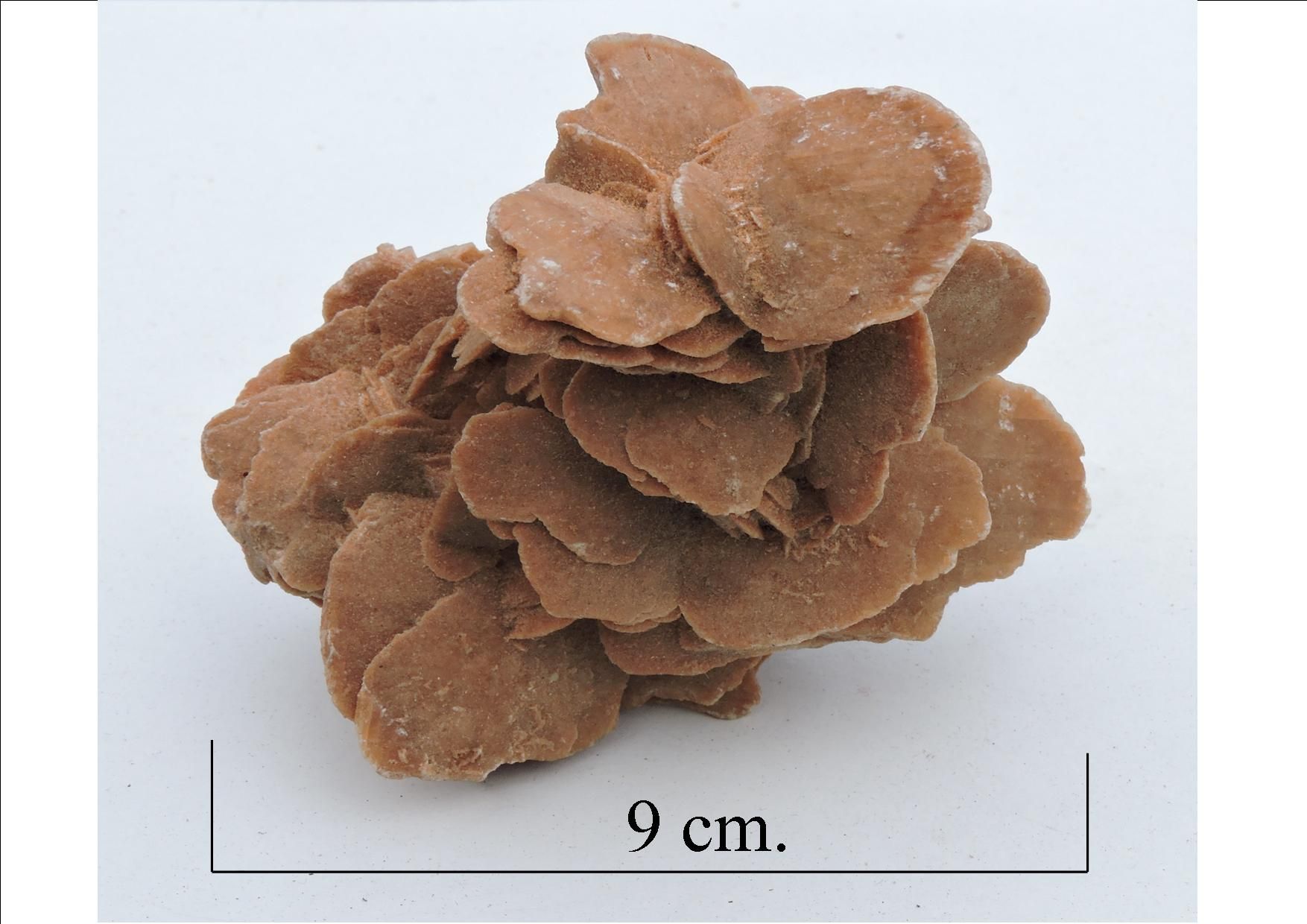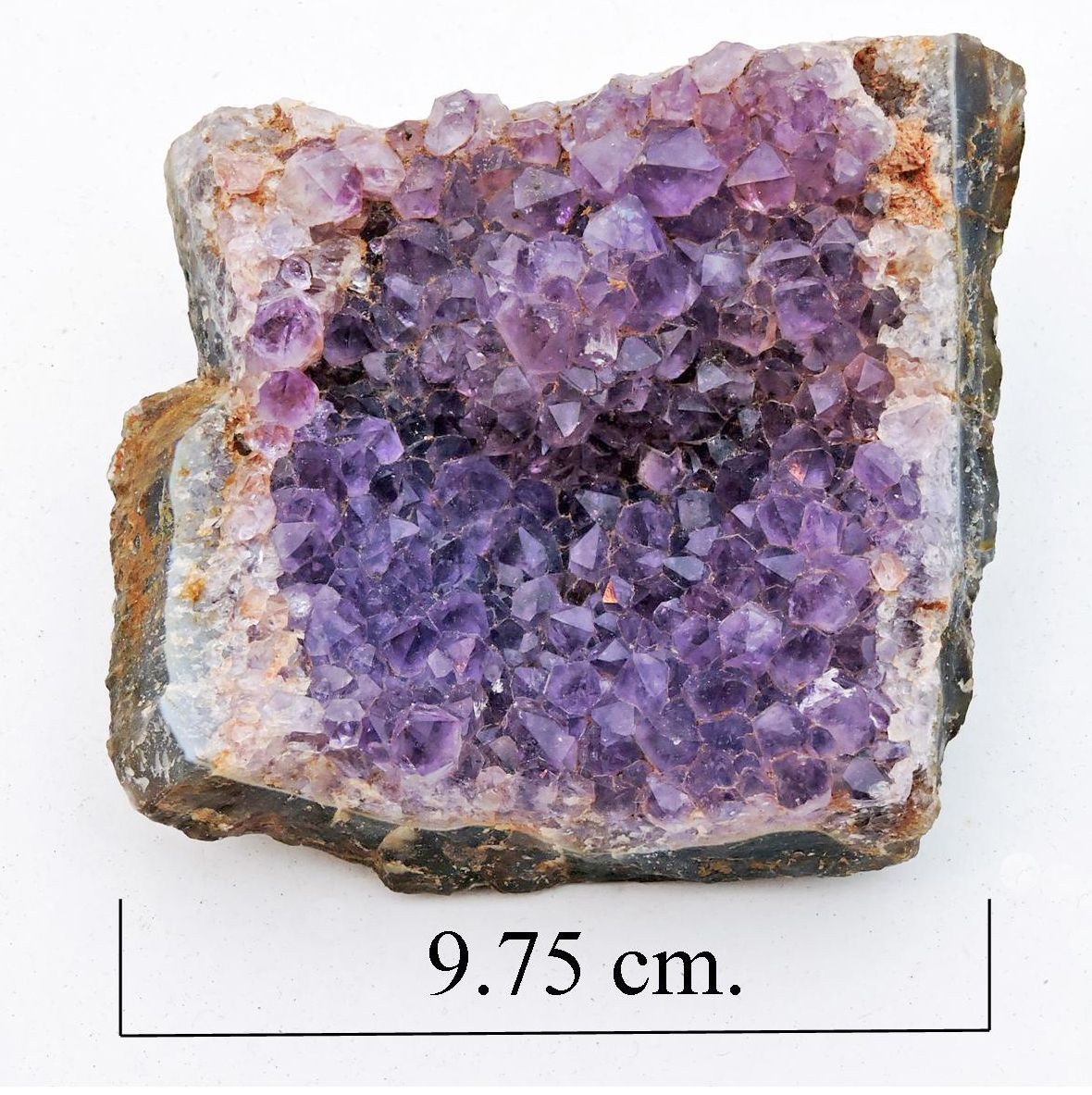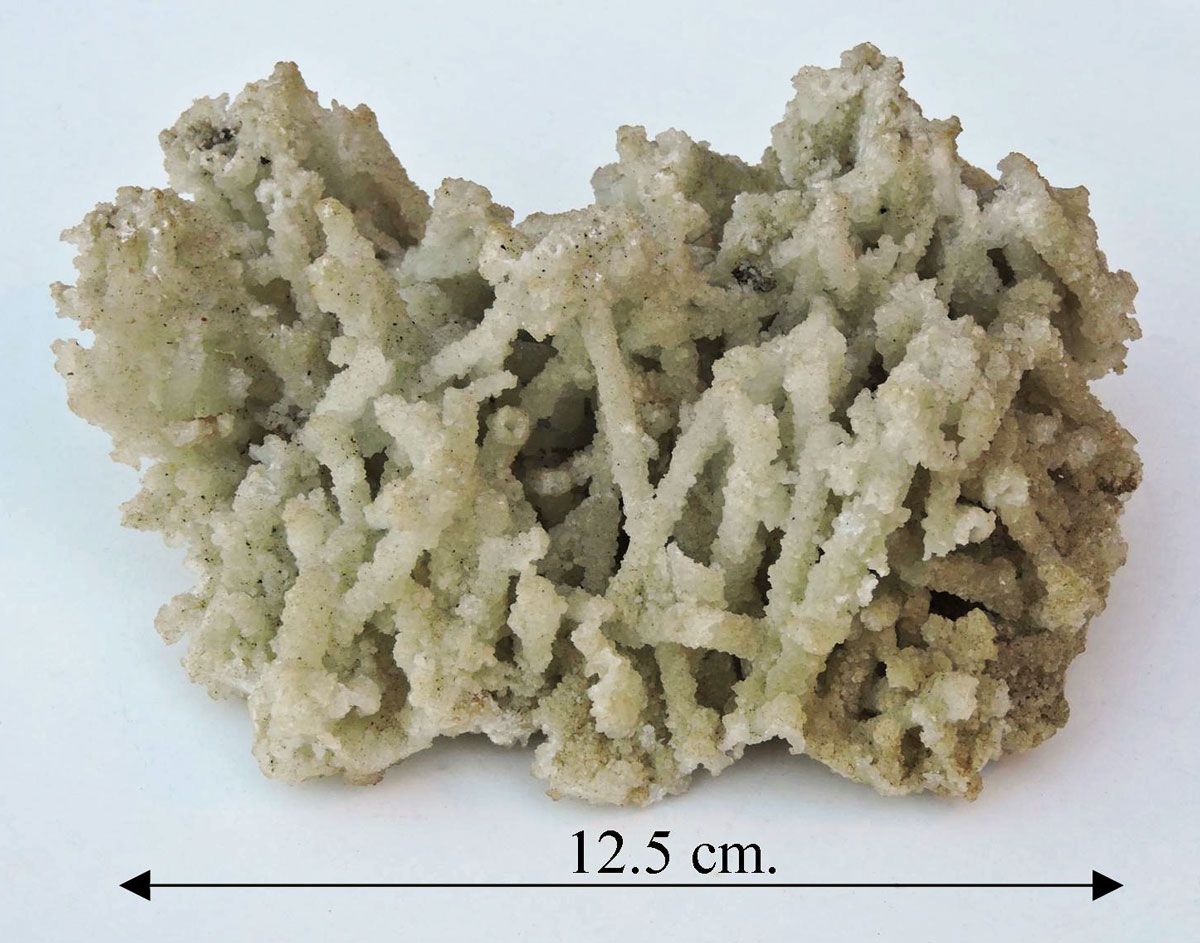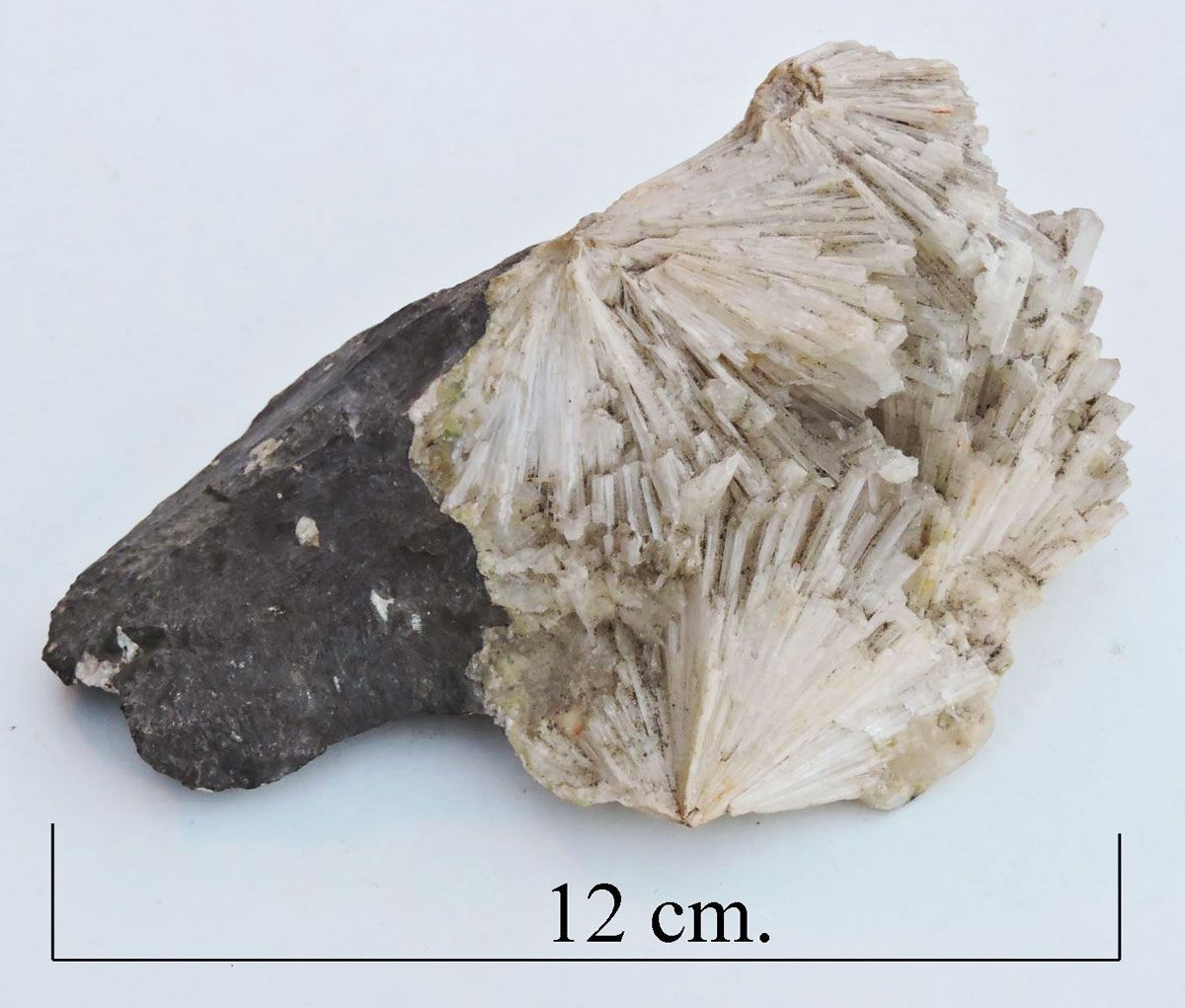
Gypsum, Desert rose var.
Gypsum, CaSO. 4· 2H2O is an evaporite mineral. It is precipitated from mineral rich bodies of water, either lakes or seas, as they dry up,and are no longer able to hold the minerals in suspension. In arid areas rich in silica sand, crystals are formed which incorporate sand grains in their growth, and " Desert roses" are formed. There are a number of minerals which form Desert roses, the two most common being baryte or gypsum. The origin of this gypum rose is unknown,and a guess at it's age would be Permian.



